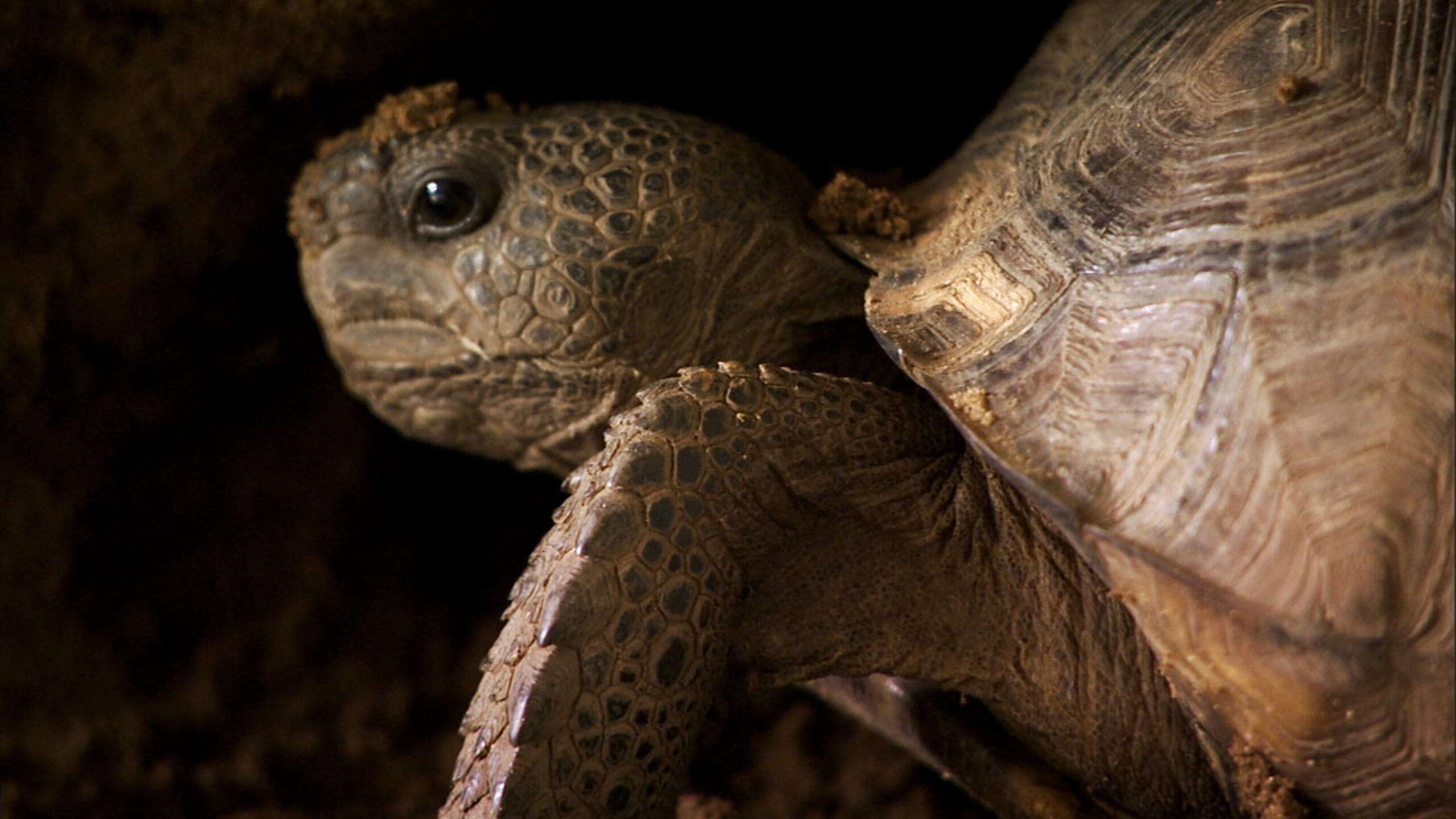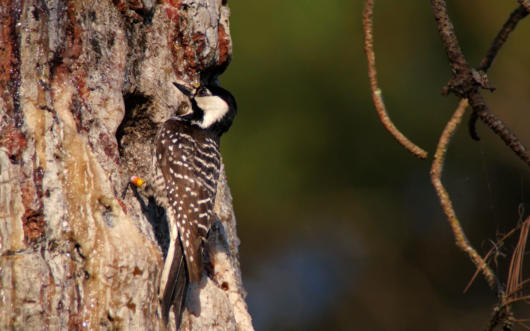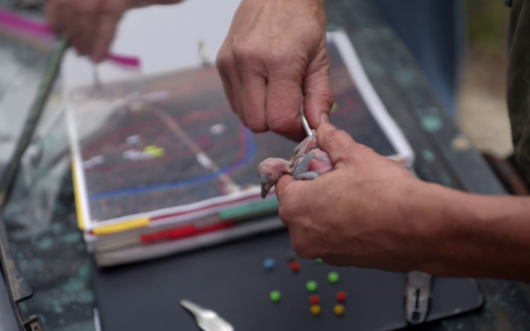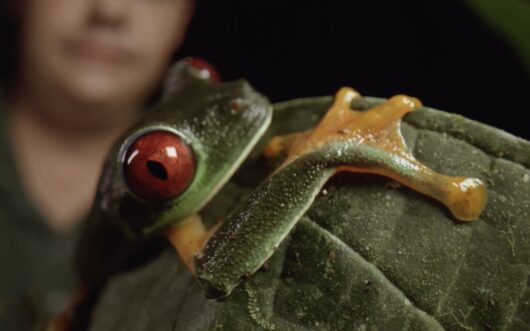Bring reptiles, ecosystems, and conservation science into your classroom.
Explore how conservation biologists are working to restore the longleaf pine forests of the southeastern United States and protect two keystone reptiles—the Eastern indigo snake and the gopher tortoise. This educator guide supports classroom discussion, NGSS-aligned learning, and hands-on opportunities for student engagement.
GRADES
9 – 12+
SUBJECTS
Biology, Storytelling, Ecology
Episode Overview
“We should all care about Eastern indigo snakes and gopher tortoises just like we care about wolves and tigers.” – Dr. Chris Jenkins, Wildlife Biologist and Chief Executive Officer, The Orianne Society
In The Serpent’s Lair we hear from biologists Dr. Chris Jenkins and Dr. James Brogan about their efforts to protect and restore the populations of two American reptiles, the Eastern indigo snake (Drymarchon couperi) and the gopher tortoise (Gopherus polyphemus). Both species thrive in the longleaf pine (Pinus palustris) forests of the Southeast United States but centuries of habitat loss and fragmentation has sent the snake and tortoise populations into a steep decline. The two species are uniquely interconnected where the Eastern indigo snake controls predator populations and the gopher tortoise dens provide overwintering habitat for the snake in the northern part of its range. Fortunately, Jenkins and his team are working to purchase land and restore habitat in areas where the tortoise can thrive while Brogan’s team works on captive breeding of the snakes to reintroduce them into the new habitat, complete with burrows to protect them.
Focus Questions
- Why is the longleaf pine ecosystem so important to protect and conserve?
- Why is the gopher tortoise considered a keystone species in its habitat?
- How does the eating behavior of the Eastern indigo snake help protect other species of animal?
- How does fire function to increase the biodiversity of an ecosystem?
- How does captive breeding work as a conservation strategy?
Key Concepts
- Habitat loss and fragmentation: Over the last two centuries 97% of the longleaf pine forests of the Southeast United States have been lost to agriculture and urban development. The decimation of the longleaf pine ecosystem has had a devastating effect on biodiversity, including species like the Eastern indigo snake and gopher tortoise.
- Biodiversity: The International Union for the Conservation of Nature lists more than 44,000 species threatened with extinction and agriculture is the major threat for more than half of these species. Restoring and conserving critical natural habitats like the longleaf pine ecosystem can help mitigate the threats to biodiversity and even bring many species back from their threatened and endangered status.
- Conservation biology: The practice of conservation biology recognizes the intrinsic value of the Earth’s natural diversity of organisms. Conservation biology works to understand how the natural world operates, how humans affect nature, and how we can use collective scientific and cultural knowledge to conserve Earth’s biological diversity.
- Apex predator: Eastern indigo snakes are apex predators because they are at the top of their food chain in their habitat and they have no natural predators. As a result, the Eastern indigo snake controls the populations of other predatory snakes by eating them, thus protecting the populations of many other species in their habitat.
- Keystone species and species diversity: Gopher tortoises are an important keystone species because their burrows provide habitat for hundreds of other animal species which in turn provide stability for local food webs. Without gopher tortoise burrows much of the local animal community biodiversity would collapse.
- Ecosystem engineers: As part of their function as keystone species, gopher tortoises physically modify the abiotic environment of the longleaf pine ecosystem by digging their burrows. In doing so they modulate the availability of resources to other species who can further modify the burrows to fit their needs. For example, gopher tortoise burrows are often re-engineered by Florida mice (Podomys floridanus) and other rodents that dig smaller side-burrows and pockets.
- Commensalism: In a commensalism relationship, one species obtains food, shelter, or other benefits without harming or benefiting the other. Because gopher tortoise burrows provide shelter for so many other species, a thriving gopher tortoise population is necessary for their commensal species populations to exist.
Curriculum Connections
NGSS
- HS-LS2 Ecosystems: Interactions, Energy, and Dynamics
- LS2.A: Interdependent Relationships in Ecosystems
- LS2.C: Ecosystem Dynamics, Functioning, and Resilience
- LS2.D: Social Interactions and Group Behavior
- LS4.D: Biodiversity and Humans
- HS-LS4 Biological Evolution: Unity and Diversity
- LS4.B: Natural Selection
- LS4.C: Adaptation
- ETS1.B: Developing Possible Solutions
For complete list of curriculum connections including AP & IB standards, refer to full PDF.




